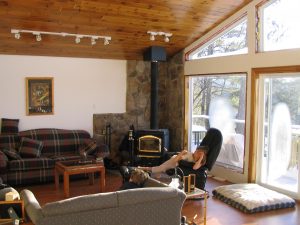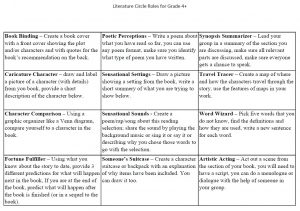Picture of my kids (at 9 & 11 years old) being “bored”
Upon hearing that my students could be at home for up to 3 weeks due to an “extended March Break”, I started putting a list together of “kid” things to do. Once my students discovered I was writing this list, they gave me many more activities to keep kids busy at home.
While putting this list together, it reminded me of when I was young and my own children were young when we had limited access to technology – as a single parent I could only afford a rabbit TV antenna … we got only 4 channels clearly.
I’d like to thank my students for all their suggestions, and together, we always make having fun learning better.
Collaboratively Yours,
Deb Weston, PhD
Stay Home Activities for Kids
Make (always with adult supervision and/or permission)
1. Invent new things with household items – an invention convention
2. Design and sew clothes – using old clothes and material
3. Cook or bake something (like homemade pizza)
-
- ask for adult supervision or help
- read the recipe
- make sure you have all the ingredients you need
- make sure your parents are present when you use the stove or oven
- ask someone to critique your food
4. Make an obstacle course – challenge yourself, friends and parents to get through it in record time
5. Make popsicles – using fruit and juice
6. Make Best Ever No-Cook Play Dough Recipe
-
- 2 cups plain flour (all purpose)
- 2 tablespoons vegetable oil (baby oil and coconut oil work too)
- 1/2 cup salt.
- 2 tablespoons cream of tartar.
- 1 to 1.5 cups boiling water (adding in increments until it feels just right)
- gel food colouring or regular food colouring (optional) (I use no sugar Koolaid Mix)
- Mix together and knead dough
7. Make homemade ice cream
With just a few basic ingredients and a bit of shaking, you will be enjoying individual bowls of ice cream. Making this will allow kids to explore scientific concepts that turn this creamy liquid into a yummy solid.
What You’ll Need:
-
-
-
- 1 1/2 cups half and half
- 1 tablespoon sugar
- 1/4 teaspoon vanilla
- 1/2 cup rock salt
- 3 cups ice
- 1 gallon-size zip-top bag
- 1 pint-size zip-top bag
- Dish towel
-
-
What You Do:
-
-
- Start by filling the gallon-size zip-top bag with half the ice. Invite your child to sprinkle half the rock salt over the ice and then place the pint-size zip-top bag inside.
- Now carefully measure and pour the half and half into the small pint-size bag along with the vanilla and sugar. Make sure the top is tightly sealed!
- Pack the rest of the ice around the cream-filled baggie and then sprinkle with the rest of the rock salt. Zip the top, wrap in the dish towel, and get ready to shake.
- While your child is shaking away, take a moment to chat about what role the salt plays in the homemade ice cream making experiment. Without the salt, the ice wouldn’t dip below 32F, which isn’t cold enough for making the ice cream. The freezing point of salt water is lower than regular water, so adding all that salt is an essential part of making the cold treat!
- Enlist your youngster to keep track of the time and check the bag after one to two minutes of good shaking. Creamy ice cream should be awaiting inside!
- Remove the ice cream from the bag of salted ice and enjoy — straight from the bag.
-
Perform (always with adult supervision and/or permission)
1.Make your own musical instruments with items found around the house – have a musical performance
2. Make puppets – perform a puppet show
3. Kid Karaoke – by playing music and singing along to it
4. Record a stuffed animal performance – using stuffed animals as the cast members
5. Write and perform a play using a story you know or make up your own story – Don’t forget to write scripts and make props/costumes
6. Play “Pictionary” – by drawing something and having people guess what it is
Build (always with adult supervision and/or permission)
1.Build Structures and analyse it
- Analyse the forces in the structures – gravity, load, push, pull, forces
- Take a picture to share
2. Build a fort in your house – take picture to show your friends
3. Build a cardboard box arcade – make up games you’ve played and some new ones
Explore New Things (always with adult supervision and/or permission)
1.Play board games or card games – try a new game you have never played
2. Listen to music you have never heard – like Jazz and Classical
3. Go for Nature Walks – Take pictures of interesting things to present to others
4. Explore your family’s past
- by asking your parents and grandparent to tell you stories about their lives – I loved hearing my grandparents’ stories and tell them to my adult children now
- write down these stories so they will be remembered!
Create (always with adult supervision and/or permission)
1.Create your own board game – using spinners (paper clip) and/or dice with play money
2. Create your own recipe – but remember if you make it you must eat it!
3. Create your own card games – remember to write out the rules
4. Create a Kids Art Museum – Draw, paint, make sculptures and put them on a display
Practice (always with adult supervision and/or permission)
1.Calligraphy or practice cursive writing
2. Math Facts Competition
- Adding and subtracting to 10, to 20, to 50 to 100,
- Practice multiplying and dividing by 10 and 100
- Multiplication tables
3. French Practice
https://www.digitaldialects.com/French.htm
- Have a French cafe where everyone must speak French and order food in French
- Have a French Fashion Show where all clothing is described using French names for clothing and colours
Media (always with adult supervision and/or permission)
1.Movie Marathon – Watch all the movies from one series such Harry Potter, Jurassic Park, Lego Movies, How to Train Your Dragon
2. Watch “old” TV series – The Flintstones, Fresh Prince of Bel-Air, Gilligan’s Island, Brady Bunch
3. Watch “old” kids series – Arthur, Sesame Street, Magic School Bus
4. Listen to audio books for kids – review/talk about the books
5. Listen to pod casts for kids – critique the pod cast
6. Write a journal on news items
- Topics that interest kids like Covid19, Climate Change, Fashion, Sports
- Include Who, What, Where, When, Why, & How in journal
- Include appropriate pictures from the media.
- This could be a daily journal on what was happening in the world during the pandemic.
7. Watch a movie and review it – Tips to Write Engaging Movie Reviews
- Watch movies in which your parents approve
- Take notes while watching the movie
- Analyzing each part of the movie – plot/story, characters, setting, action scenes
- Express your opinions and use supporting details of your criticism
- Watch it again if you need more information
- Considering audience kids, adults
- No spoilers please
9. Review a book for a book talk
- First name, Where you live
- Name of Book, Author(s), Source (where you found it)
- Type of Book: (identify genre: fantasy, sci-fi, realistic fiction, biography, autobiography, memoir, historical fiction, journal, folk tale, fairy tale, mystery, legend, etc)
- Summary: Summarize the plot in a short paragraph. In your summary, identify the main plot, major conflicts/problems, and how the problems were solved.
- Characters: Summarize the main elements of each important character. Evaluate two or three decisions these character(s) made. Highlight three key events that provide insight into the main character(s)’s personality. Chose a minor character and show how he or she was important to the plot, main character, or themes.
- Connecting yourself to the book: List several things that you value or that are important to you from the book. List a character’s actions or values. Compare and contrast you list to the character’s list, pointing out similarities and differences. Are you similar or different to the character? Explain why.
- Paragraph pulled out: Pick an interesting paragraph from the book and read it to the class. Explain why you liked it.
- Recommendation: Do you recommend the book? Why or why not? For what age group or gender? Give reasons to back up your opinion.
- Maximum length: one handwritten or three-quarter typed page double spaced. Remember to proof read for conventions (spelling and grammar).
9. Start a Literature Circle (Activities listed below)
Literature Circle Roles for Grade 4 up
PS: I sneaked some real school work activities into this blog!



Thanks for sharing this … my students who provided many ideas will love this!
My daughter, now 27, is with us at our cottage … also brought her dog and two cats! We are still looking for things to do.
Wishing you good health
Deb Weston mom of now 26 and almost 28 year olds
Great list Deb!